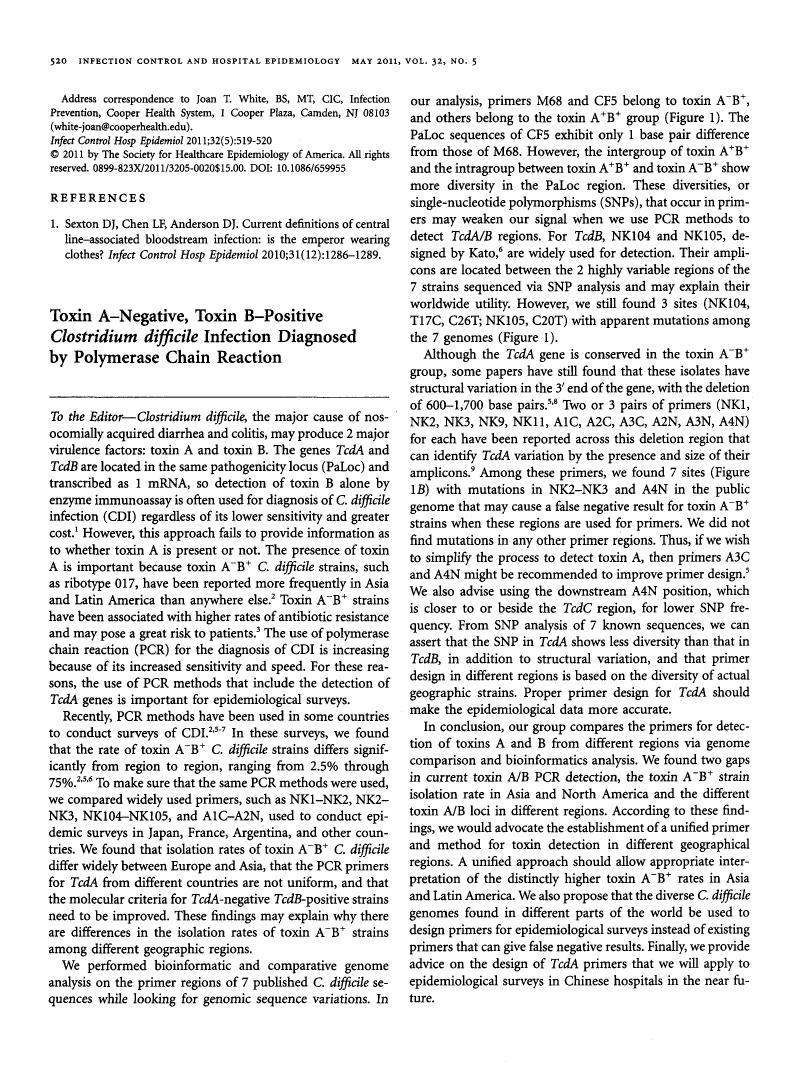Crossref Citations
This article has been cited by the following publications. This list is generated based on data provided by Crossref.
YAN, Q.
ZHANG, J.
CHEN, C.
ZHOU, H.
DU, P.
CUI, Z.
CEN, R.
LIU, L.
LI, W.
CAO, B.
LU, J.
and
CHENG, Y.
2013.
Multilocus sequence typing (MLST) analysis of 104Clostridium difficilestrains isolated from China.
Epidemiology and Infection,
Vol. 141,
Issue. 1,
p.
195.
Du, Pengcheng
Cao, Bo
Wang, Jing
Li, Wenge
Jia, Hongbing
Zhang, Wen
Lu, Jinxing
Li, Zhongjie
Yu, Hongjie
Chen, Chen
Cheng, Ying
and
Munson, E.
2014.
Sequence Variation in
tcdA
and
tcdB
of Clostridium difficile: ST37 with Truncated
tcdA
Is a Potential Epidemic Strain in China
.
Journal of Clinical Microbiology,
Vol. 52,
Issue. 9,
p.
3264.
Cao, Bo
Zhang, Yuanyuan
Bian, Funing
Cheng, Ying
Wang, Jing
Jia, Hongbing
Zhang, Wen
Lu, Jinxing
Chen, Chen
and
Du, Pengcheng
2015.
Detection of Clostridium difficile toxin genes by PCR: sequence variation may cause false-negative results.
Journal of Medical Microbiology
,
Vol. 64,
Issue. 2,
p.
195.
Li, Na
Jia, Hongbing
Yang, Hui
Ji, Bing
Liu, Yongyun
Peng, Xinguo
Cheng, Ying
and
Zhang, Wen
2017.
Preliminary screening of type IV secretion system in divergent geographic sources of Clostridium�difficile.
Experimental and Therapeutic Medicine,
Zhou, Yu
Mao, Liyan
Yu, Jing
Lin, Qun
Luo, Ying
Zhu, Xuhui
and
Sun, Ziyong
2019.
Epidemiology of Clostridium difficile infection in hospitalized adults and the first isolation of C. difficile PCR ribotype 027 in central China.
BMC Infectious Diseases,
Vol. 19,
Issue. 1,



